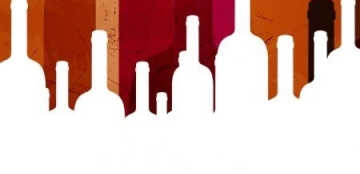- FAQ
- Champagne
Champagne
What's the most popular Champagne?
The Dom Pérignon produced by Moët & Chandon is one of the best Champagnes all over the world, appreciated not only for impeccable quality but also for the prestigious reputation.
Why is it called Champagne?
Champagne is called after the Champagne region of France where it was first produced.
Why can Champagne only be made in France?
Champagne comes from France only, owing to the PDO regulations, which prohibit the usage of the term “Champagne” for any other thing but sparkling wines made in Champagne region of France.
What is the difference of wine and Champagne?
Champagne is a sparkling wine, made in the Champagne region of France using the traditional method while wine is a broad category of fermented grape-based alcoholic beverages, including still, sparkling, and fortified variants.
Is Prosecco the same as Champagne?
No, Prosecco is not Champagne. A type of Italian sparkling wine, Prosecco is made from the Glera grape and is manufactured using the Charmat method. Champagnes otherwise come from the Champagne region of France, which is mainly made of Chardonnay, Pinot Noir, and Pinot Meunier grapes using the traditional method.
What is difference between sparkling wine and Champagne?
The main variation is in the area of origin and the method of production. Champagne is the definition of sparkling wine made by the traditional method in the Champagne region of France and when you refer to sparkling wine it’s all effervescent wines no matter how they are produced throughout the world.
Is champagne very alcoholic?
The alcohol content of Champagne is usually about 12.0%, a level of alcoholic strength which is common to most wines.
What is champagne made from?
The grape used for champagne are Chardonnay, Pinot noir, and Pinot meunier.
Is champagne a liquor or wine?
Champagne are one of the varieties of the sparkling wines.
What makes Champagne different from other sparkling wines?
Champagne is only produced in the Champagne region in France, but other sparkling wines could originate from different areas all over the world.
How do Champagne styles like Brut, Extra Brut, and Demi-Sec differ?
The sweetness levels in the different Champagne styles are Burt as the driest and Demi-Sec as the sweetest.
How does Champagne aging affect its flavor profile?
Champagne aging adds complexity with subtle flavors of toast, nuts, and honey.
What is the significance of the Champagne region's terroir in wine production?
The terroir of The Champagne region affects grape quality and provides its wines with unique features.
How does the Champagne dosage impact the final taste of the wine?
A dose, which is a combination of wine and sugar, defines the sweetness and harmony of a Champagne.
What are the key differences between vintage and non-vintage Champagnes?
Vintage champagnes are produced from grapes that were harvested in a single remarkable year while a non-vintage involves grapes from different years to make them have a consistent taste.
What role does the Champagne bottle shape play in preserving the wine?
The traditional bottle shape of the Champagne, having thick glass, and deep punt, assists in keeping the pressure and saves the wine from oxidation.
How does Champagne production adhere to sustainable practices?
A lot of Champagne houses practice sustainable viticulture and winemaking causing less environmental harm.
What food pairings complement Champagne?
The flexibility of champagne as an accompaniment allows it to go well with an assortment of foods like seafood, poultry, cheese, and desserts.
What is the significance of the Champagne cork and wire cage?
The cork and wire cage provide good sealing and hold of the carbonation in Champagne bottles.
What are the main steps involved in the Champagne production process?
The process of Champagne production begins with the grape harvest, followed by primary fermentation, blending, secondary fermentation, aging, disgorgement, dosage, and bottling.
Categories:








Great, fast delivery. Excellent selection of wines not that freely available elsewhere.